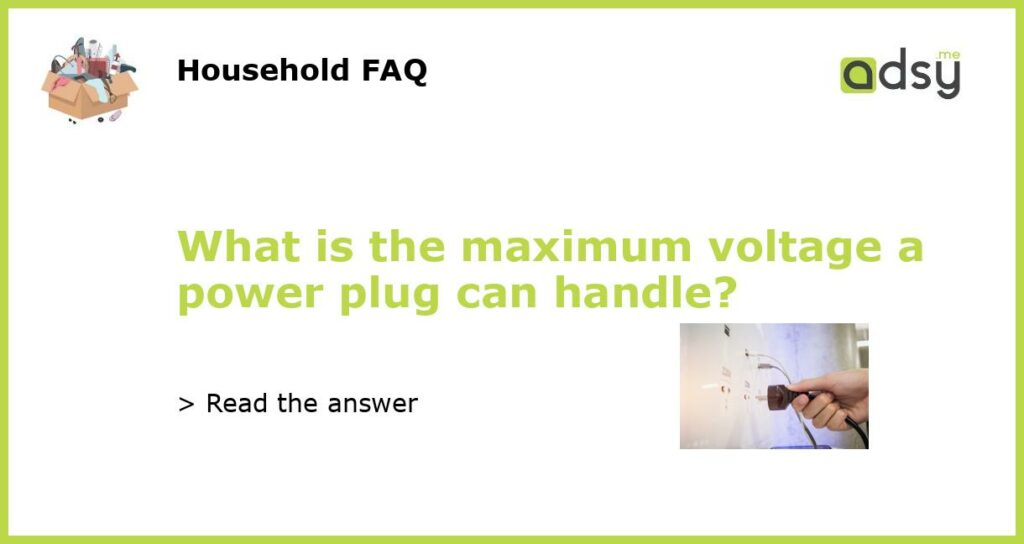Maximum Voltage a Power Plug Can Handle
When it comes to electricity, safety is paramount. It is essential to understand the limits of electrical outlets and power plugs to prevent accidents, fires, or damage to electrical devices. One crucial factor to consider is the maximum voltage that a power plug can handle.
Understanding Voltage in Power Plugs
Voltage is the force or pressure that moves electric current through a circuit. It is measured in volts (V). Each country has its standards when it comes to voltage, with different values used for residential, commercial, and industrial applications. For example, in the United States, the residential voltage standard is typically 120 volts, while in Europe, it is commonly 230 volts.
Power plugs, also known as electrical outlets or sockets, are designed to accommodate specific voltage ranges. The maximum voltage a power plug can handle depends on the country or region and the electrical infrastructure in place.
International Standards for Power Plugs
Throughout the world, various standards and systems are in use to ensure compatibility and safety. The most widely recognized power plug standards include:
- International Electrotechnical Commission (IEC) 60906-1: It is the global standard used for AC power connectors. This standard specifies the voltages, currents, and parameters for plugs and sockets used in different countries, including maximum voltage limits.
- British Standard (BS) 546: It is the standard used in the United Kingdom and some former British territories. BS 546 specifies different plug types with maximum voltage ratings depending on the specific socket type.
- NEMA 5-15: This standard is used in North America and specifies the maximum voltage of 125 volts for most residential and commercial outlets.
- Type K: Commonly used in Denmark and Greenland, Type K plugs have a maximum voltage of 250 volts.
- Type G: The British BS 1363 standard, known as Type G, supports a maximum voltage of 250 volts in the United Kingdom and other countries that follow this standard.
Plug Adapters and Voltage Converters
For international travelers or individuals using electrical devices from different countries, plug adapters and voltage converters are often necessary. A plug adapter allows a power plug from one country to be physically connected to an electrical outlet in a different country. It does not, however, change the voltage of the power supply.
A voltage converter, on the other hand, is required when the voltage of the power supply in the destination country is different from the voltage required by the electrical device. A voltage converter can step up or step down the voltage as needed to ensure compatibility.
Importance of Knowing the Maximum Voltage
Understanding the maximum voltage a power plug can handle is crucial for both safety and the proper functioning of electrical devices. Exceeding the maximum voltage can result in overheating, damage to the device, or even electrical fires.
It is essential to check the voltage requirements of electrical devices before plugging them into an outlet. Many modern devices, such as laptops and smartphones, have built-in voltage regulators and can automatically adjust to different voltage levels. However, older or specialized devices may not have this capability and could be damaged if connected to a voltage exceeding their specifications.
Additionally, using a voltage converter or transformer may be necessary when traveling to a country with a different voltage standard. Not all electrical devices are compatible with different voltages, and using them without a voltage converter can lead to permanent damage.
The maximum voltage a power plug can handle depends on various factors, including the country or region, the electrical standard being followed, and the specific plug type. It is crucial to understand and abide by these limitations to ensure electrical safety and prevent damage to electrical devices. Awareness of international power plug standards and the use of plug adapters or voltage converters when necessary can help maintain a smooth and safe electrical experience.






